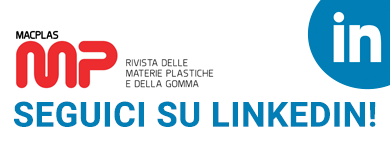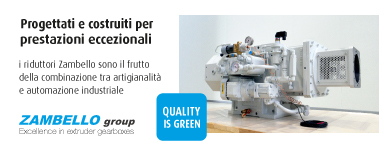The 2013 full-year forecast for the Italian plastics and rubber machinery industry developed by Assocomaplast on the basis of Istat (the Italian Institute of statistics ) foreign trade data for the first nine months of the year shows a slight dip in exports (-2.8% with respect to January-September 2012). Exports have historically represented the strong point for such an industry, with a share exceeding 65% of production, rising to over 70% considering the value of auxiliary equipment provided to the project-leader companies to complete the production lines sold abroad. Thus, with all due caution while awaiting final data for the year, Assocomaplast projects that production for the industry will achieve a value quite similar to that for 2012, just under 4 billion euro, going on to surpass that threshold in 2014.
The more accentuated negative sign for imports (-5.4%) reflects the continuing sluggishness of the domestic market, which has only begun to show some slight sign of improvement in the past few weeks, nevertheless raising hopes for a reversal of trend. The combination of the two foreign trade flows has led to a worsening - albeit limited to 2% - of the balance of trade, which nevertheless remains strongly positive.
Providing some support to the climate of prudent optimism - or attenuated pessimism, according to the most cautious - are the results of the recent survey conducted by Assocomaplast among its members, where half the sample sees recovery in their revenues in the second half of the year with respect to the first half; over 40% of respondents reported a positive trend in orders in November, compared both to October 2013 and to November 2012. The recent K in Düsseldorf has probably provided a positive impulse here: most of those interviewed confirmed that they had had a high number of quality contacts at the German fair, obviously hoping that many may transform into actual orders.
An analysis of the destination areas for the industry's exports indicates a general shrinkage of sales, with the exception of Africa, which represents 5.6% of the total and has grown by an impressive 23% with respect to January-September 2012. The other principal geographical outlets have all faltered to varying degrees. The situation, in order of decreasing market size, is as follows:
- Europe (59.5% of the total), -4.4%; the EU (46.8%) records -2.2%;
- America (17.9%), -4.9%; the Nafta area recorded the worst performance caused by strong dips in exports to Mexico (-15%) and to the United States (-7%), which were not counterbalanced by the +20% to Canada, given its smaller value;
- Asia (16.3%), -1% overall. Two significant results were recorded in Far Eastern markets: China, with a 17% drop in sales of Italian plastics and rubber processing machinery; and Japan, where they more than quadrupled to over 25 million euros driven by major orders for extruders. The Middle East, representing 3.8% of the market, was substantially stagnant, with +0.7% with respect to the equivalent period last year;
- Oceania, a marginal player, records a dip of over 9 percentage points.
























